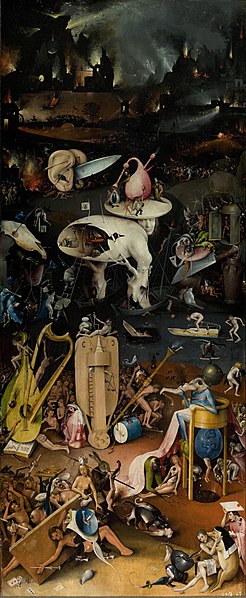Joachim Patinir, also called Patenier, was a Flemish Renaissance painter of history and landscape subjects. He was Flemish, from the area of modern Wallonia, but worked in Antwerp, then the centre of the art market in the Low Countries. Patinir was a pioneer of landscape as an independent genre and he was the first Flemish painter to regard himself primarily as a landscape painter. He effectively invented the world landscape, a distinct style of panoramic northern Renaissance landscapes which is Patinir's important contribution to Western art. His work marks an important stage in the development of the representation of perspective in landscape painting.
Portrait of Joachim Patinir by Aegidius Sadeler after Dürer
Landscape with the Flight into Egypt, oil on panel, 17 × 21 cm, Royal Museum of Fine Arts, Antwerp
The Baptism of Christ, oil on oak, 59.5 × 77 cm, Kunsthistorisches Museum, Vienna
Geological inspiration: detail from Patinir's St Jerome (National Gallery), juxtaposed with photographs of the dramatic rock pinnacles of Dinant
Dutch and Flemish Renaissance painting
Dutch and Flemish Renaissance painting represents the 16th-century response to Italian Renaissance art in the Low Countries, as well as many continuities with the preceding Early Netherlandish painting. The period spans from the Antwerp Mannerists and Hieronymus Bosch at the start of the 16th century to the late Northern Mannerists such as Hendrik Goltzius and Joachim Wtewael at the end. Artists drew on both the recent innovations of Italian painting and the local traditions of the Early Netherlandish artists.
The Fall of Icarus, now considered a copy of Pieter Bruegel the Elder
Hell, the right panel from the triptych The Garden of Earthly Delights by Hieronymus Bosch
Cornelis Aerentsz van der Dussen by Jan van Scorel (c. 1535) Panel, Weiss Gallery, London







